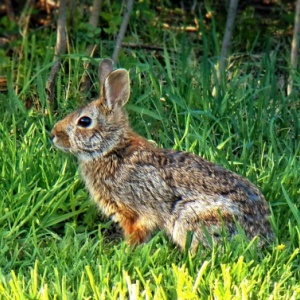
The demand for meat is expected to double by 2050. Projections indicate that expanding the livestock industry to meet this demand would exceed biophysical limitations, dangerously exacerbating climate change and biodiversity loss. This paper uses an anthropological approach to explore an alternative meat source that not only avoids livestock’s pitfalls, but targets introduced pest species that have a history of profound destruction within Australian ecosystems.
The author describes how the meat of feral animals—e.g. venison, rabbit and wild boar—is being embraced by three sets of consumers in Melbourne. The first foreground environmental impacts in their consumption choices. At times identifying as ‘pest-a-tarians’ or ‘invasivores’, members of this group recognise the need for reduced meat consumption, and assuage their guilty cravings through opting for what they see as the most ethical meat available. This is both in environmental terms, and in view of animal welfare, as living wild is seen as more natural and desirable for an animal than a life of domesticity. The second group values feral meat for its gastronomic novelty, while the third chooses feral for its nutritional profile, as lean meat that is not subject to the interventions of farming, such as antibiotic use. This perspective is indicative of the paradigm shift described in the article, where a sense of the uncanny in relation to meat is moving away from the wild and back towards the domestic.
The paper argues that while eating feral has its benefits, it is no magic bullet. Within capitalist logic, the commercialisation of feral meat may in fact be detrimental to conservation, as attaching a positive economic value could lead not to the eradication of pest species, but to their perpetuation for profit. Moreover, as a reduction in meat consumption would unequivocally benefit the environment, it could be argued that going feral avoids the need for a cultural shift away from meat-oriented diets. Australians are avid meat eaters, consuming almost twice that of the British in an average year (Franklin 2006: 221). This proclivity suggests that despite its problematic aspects, eating wild meat, and particularly that of ferals, could be a small step towards more sustainable foodways in Australia.
Abstract
Feral animals are commonly constructed as the scourge of the Australian landscape. The transgressive act of introduced, domestic animals going wild elicits strong emotive responses within the community, often conceived in a kind of Freudian spectre of das unheimliche (the uncanny/unhomely), as the once familiar becomes uncontrolled, strange and frightening. Meanwhile, exponential global growth in human populations, and the resulting strain on the environment and food security, is necessitating the rethinking of meat consumption. In Australia, while the stigma surrounding feral animals has historically inhibited their consumption, feral meat is regarded by a growing body of advocates as an environmentally favourable alternative to farmed meat, allowing not only the avoidance of animal suffering within the industrial agriculture model, but also benefitting ecosystems through the removal of damage-wreaking interlopers. This paper explores the feral turn and its contemporary manifestations as a growing food movement in Melbourne.
Citation
Gressier, C. (2015) Going feral: Wild meat consumption and the uncanny in Melbourne, Australia. The Australian Journal of Anthropology. doi: 10.1111/taja.12141.
Read the full paper here. You will find more resources in the Research Library related to Meat consumption, Meat taboos/religious beliefs, Dietary trends, Consumption and production trends and Consumer perceptions and preferences.







Post a new comment »